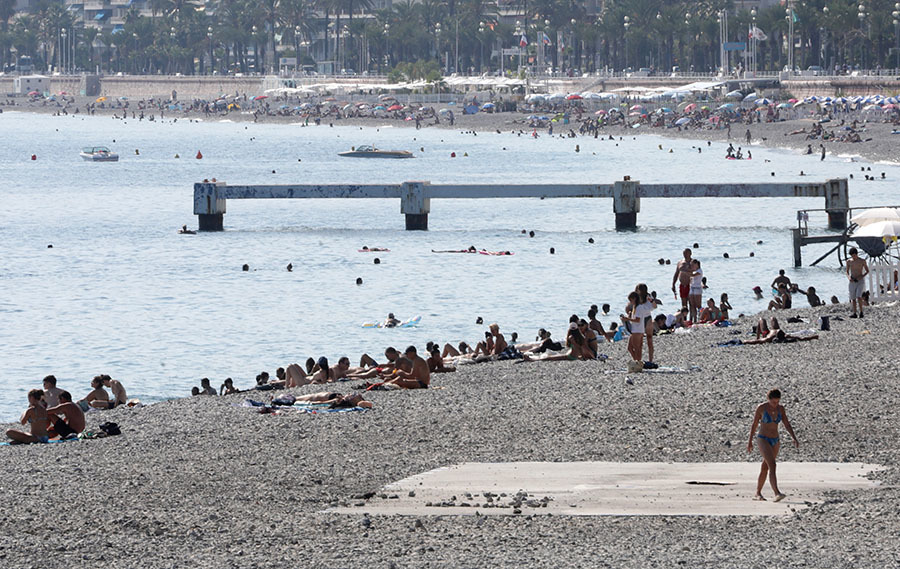To date, the global air travel market has recovered 85% after the spring crash caused by the coronavirus.
This is evidenced by data from the aircraft tracking service Flightradar24.
So, back in January 2020, international airlines operated up to 182 thousand flights per day on average.
However, in April, against the background of the introduction of quarantine measures in most states and the massive closure of borders, the indicator decreased almost three times and dropped below 64 thousand.
At the same time, in May, against the background of the gradual lifting of restrictions, air traffic began to grow moderately.
In summer, the trend continued, and by mid-September the average number of flights per day exceeded 155 thousand.
“Many countries have allowed airlines to make passenger flights to some destinations.
As a result, passengers are more mobile, which has revived the industry.
Until the end of 2020, a slight increase in the indicator is possible due to the opening of new routes, if there is no second wave of the pandemic, "Anton Nowyov, head of the air transportation department of the AsstrA group of companies, said in an interview with RT.
According to him, the industry was able to survive difficult times due to the redistribution of flight programs.
Thus, some of the passenger liners began to carry cargo.
Meanwhile, the global aviation market will be able to fully recover from the crisis within three years, believes Anton Now.
“The fact is that at the moment many passengers are stopped from traveling by the current restrictions in the form of certificates and wearing masks, as well as the scarcity of routes.
However, over the past five years, air travel has dropped significantly due to the emergence of low-cost airlines, so after defeating the virus, this type of transportation will continue to gain popularity among passengers, ”the expert added.
To help tourism
According to the International Air Transport Association (IATA), as a result of the consequences of the coronavirus, financially 2020 could be the most difficult year in the history of aviation.
At the end of the year, the revenue of air carriers will fall by 50% compared to the same indicator in 2019 and will amount to $ 419 billion. At the same time, the total losses of the companies will exceed $ 84 billion, IATA experts are sure.
Note that the closure of borders and the massive suspension of air traffic in the spring led to a sharp collapse of world tourism.
According to the World Tourism Organization (UNWTO), the number of international travelers dropped by 65% in the first half of 2020.
Most of all, the tourist flow decreased in Asia - by 72%.
In Europe, the rate fell by 66%, in Africa and the Middle East - by 57%, and in America - by 55%.
“The sharp drop in global travel demand between January and June 2020 resulted in a loss of 440 million international travel and about $ 460 billion in tourism revenue.
This is about five times more than the losses recorded in 2009 in the context of the global economic crisis, ”says the UNWTO report.
Reuters
© Eric Gaillard
In July, experts from the United Nations Conference on Trade and Development (UNCTAD) calculated that if the international tourism industry was idle for eight months, the volume of global losses could amount to $ 2.2 trillion (2.8% of global GDP).
At the same time, a longer stagnation of the sector runs the risk of increasing losses to almost $ 3 trillion.
“Under the most pessimistic scenario - the suspension of the international tourism sector for a year - the total volume of losses could amount to $ 3.3 trillion, or 4.2% of world GDP,” UNCTAD experts say.
However, analysts interviewed by RT do not yet expect such a development of events.
Thus, the outlined opening of borders and the resumption of international flights should contain the growth of losses in world tourism at the end of the year.
“Even the opening of some of the routes has significantly increased the sales of tours, which had a positive impact on the global tourism industry.
Tourists account for more than 40% of all air travel, so the opening of popular beach resorts in the summer season allowed operators and airlines to cover part of the costs incurred against the backdrop of the pandemic, ”said Anton Nowyov.
Fuel question
According to Nowov, an increase in the number of air transportation leads to an increase in demand for fuel.
To a certain extent, this can support the recovery of global oil consumption and hydrocarbon prices, analysts say.
According to the International Energy Agency (IEA), as a result of the coronavirus pandemic and massive border closures in the first half of 2020, global demand for energy resources decreased by 10.75 million barrels per day.
“In the current environment, we expect that by the end of 2020 the price of Brent crude oil will be trading near $ 40 per barrel, but next year the price will return to the $ 50 mark,” said Vitaly Gromadin, senior analyst at BCS, in an interview with RT.
Further dynamics of demand and oil prices will largely depend on the situation with the coronavirus and the rate of mass introduction of the COVID-19 vaccine.
This is the conclusion reached by experts of the analytical agency IHS Markit.
“The rapid rise in global oil demand from the lowest crisis levels reached due to COVID-19 will continue, at least for now, but will fall slightly short of the pre-crisis level. For a full recovery in oil demand, the travel situation must be normalized, especially with air travel and commuting. This will not happen without the introduction of virus containment measures and effective vaccines, ”said IHS Markit Vice President Jim Burkhardt.

